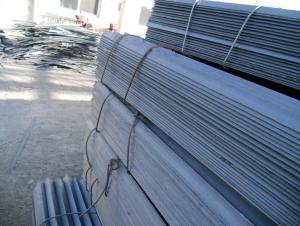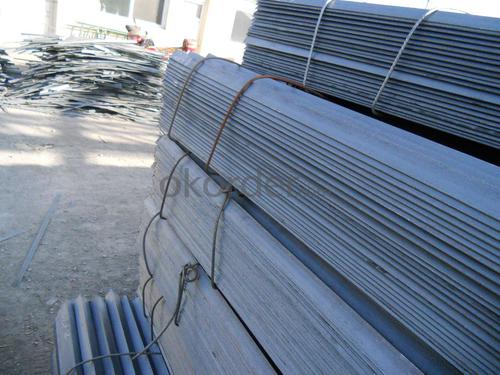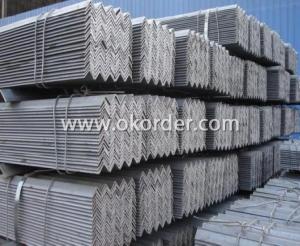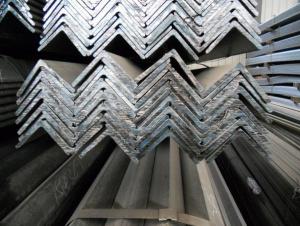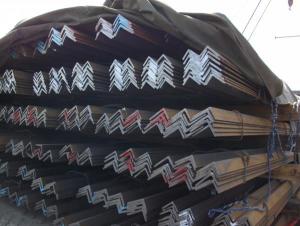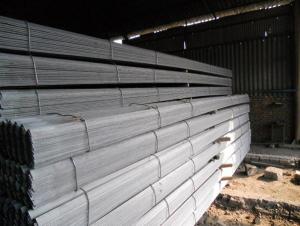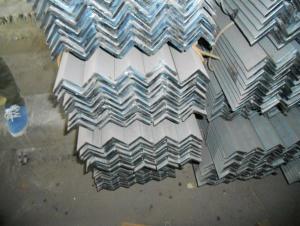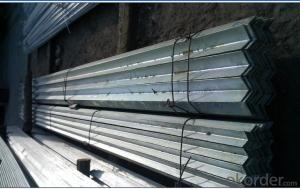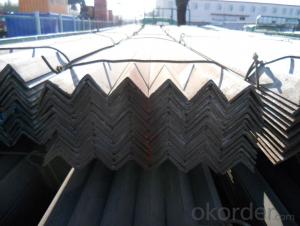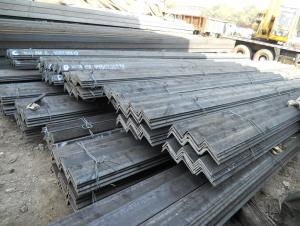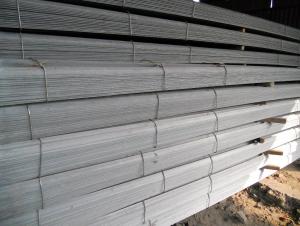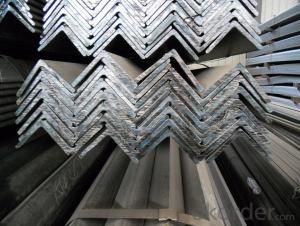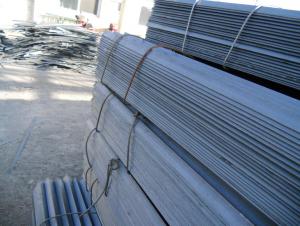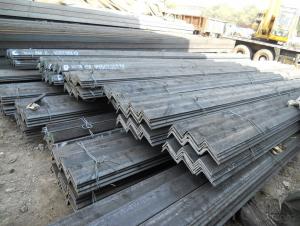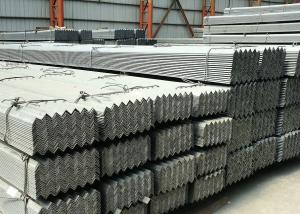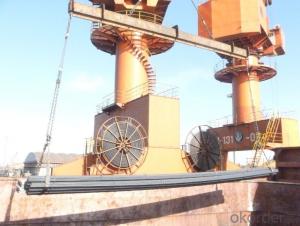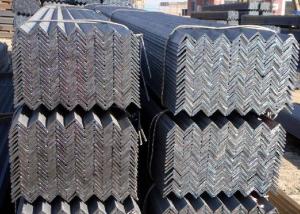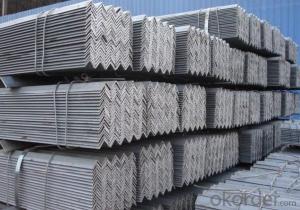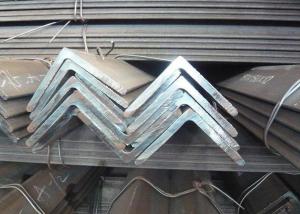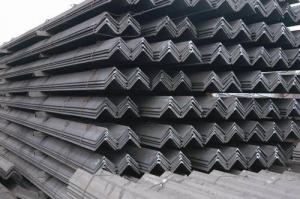Prime Low Carbon Steel Unequal Angle Bars in High Quality
- Loading Port:
- Tianjin
- Payment Terms:
- TT or LC
- Min Order Qty:
- 100 m.t.
- Supply Capability:
- 20000 m.t./month
OKorder Service Pledge
OKorder Financial Service
You Might Also Like
OKorder is offering Prime Low Carbon Steel Unequal Angle Bars in High Quality at great prices with worldwide shipping. Our supplier is a world-class manufacturer of steel, with our products utilized the world over. OKorder annually supplies products to African, South American and Asian markets. We provide quotations within 24 hours of receiving an inquiry and guarantee competitive prices.
Product Applications:
Prime Low Carbon Steel Unequal Angle Bars in High Quality are ideal for structural applications and are widely used in the construction of buildings and bridges, and the manufacturing, petrochemical, and transportation industries
Product Advantages:
OKorder's Prime Low Carbon Steel Unequal Angle Bars in High Quality are durable, strong, and wide variety of sizes.
Main Product Features:
· Premium quality
· Prompt delivery & seaworthy packing (30 days after receiving deposit)
· Can be recycled and reused
· Mill test certification
· Professional Service
· Competitive pricing
Product Specifications:
Manufacture: Hot rolled
Grade: Q195 – 235
Certificates: ISO, SGS, BV, CIQ
Length: 6m – 12m, as per customer request
Packaging: Export packing, nude packing, bundled
| UNEQUAL ANGLE STEEL | |||||
| size(mm) | a(mm) | a1(mm) | thickness(mm) | kg/m | length(m) |
| 75*50*5 | 75 | 50 | 5 | 4.808 | 6m,9m,12m |
| 75*50*6 | 75 | 50 | 6 | 5.699 | 6m,9m,12m |
| 75*50*8 | 75 | 50 | 8 | 7.431 | 6m,9m,12m |
| 100*75*7 | 100 | 75 | 7 | 9.34 | 6m,9m,12m |
| 100*75*8 | 100 | 75 | 8 | 10.6 | 6m,9m,12m |
| 100*75*9 | 100 | 75 | 9 | 11.8 | 6m,9m,12m |
| 100*75*10 | 100 | 75 | 10 | 13 | 6m,9m,12m |
| 100*75*12 | 100 | 75 | 12 | 15.4 | 6m,9m,12m |
| 125*75*7 | 125 | 75 | 7 | 10.7 | 6m,9m,12m |
| 125*75*8 | 125 | 75 | 8 | 12.2 | 6m,9m,12m |
| 125*75*9 | 125 | 75 | 9 | 13.6 | 6m,9m,12m |
| 125*75*10 | 125 | 75 | 10 | 15 | 6m,9m,12m |
| 125*75*12 | 125 | 75 | 12 | 17.8 | 6m,9m,12m |
| 150*90*8 | 150 | 90 | 8 | 14.7 | 6m,9m,12m |
| 150*90*9 | 150 | 90 | 9 | 16.4 | 6m,9m,12m |
| 150*90*10 | 150 | 90 | 10 | 18.2 | 6m,9m,12m |
| 150*90*12 | 150 | 90 | 12 | 21.6 | 6m,9m,12m |
| 200*100*10 | 200 | 100 | 10 | 23 | 6m,9m,12m |
| 200*100*12 | 200 | 100 | 12 | 27.62 | 6m,9m,12m |
| 200*100*15 | 200 | 100 | 15 | 34.04 | 6m,9m,12m |
FAQ:
Q1: Why buy Materials & Equipment from OKorder.com?
A1: All products offered byOKorder.com are carefully selected from China's most reliable manufacturing enterprises. Through its ISO certifications, OKorder.com adheres to the highest standards and a commitment to supply chain safety and customer satisfaction.
Q2: How do we guarantee the quality of our products?
A2: We have established an advanced quality management system which conducts strict quality tests at every step, from raw materials to the final product. At the same time, we provide extensive follow-up service assurances as required.
Q3: How many tons of steel products could be loaded in containers?
A3: Usually the steel products are delivered by bulk vessel because of the large quantity and the freight. However, there are no bulk vessel enter some seaports so that we have to deliver the cargo by containers. The 6m steel product can be loaded in 20FT container, but the quantity is changed according to the size, usually from 18tons to 25tons.
Images:
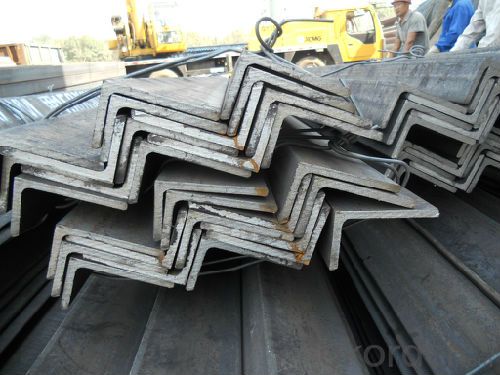
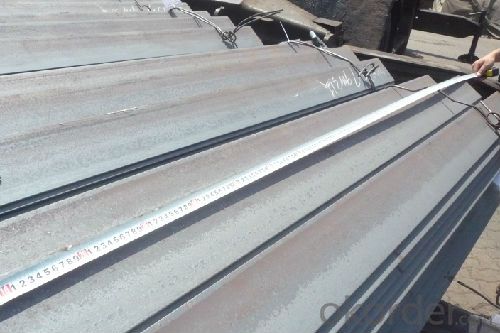
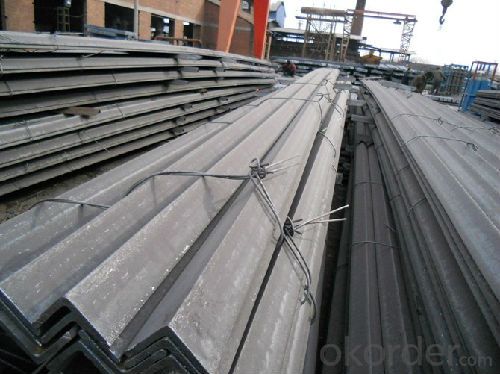
- Q: How do steel angles compare to aluminum angles in terms of strength and durability?
- Steel angles are generally stronger and more durable than aluminum angles. Steel has a higher tensile strength and yield strength, meaning it can withstand greater forces and pressures without deforming or breaking. Additionally, steel is more resistant to corrosion and can maintain its structural integrity for longer periods compared to aluminum, which is more prone to oxidation and may weaken over time. Therefore, for applications requiring high strength and long-term durability, steel angles are a preferable choice over aluminum angles.
- Q: What are the different methods for cutting steel angles?
- There are several different methods for cutting steel angles, including using a bandsaw, a chop saw, an angle grinder, a plasma cutter, or a laser cutter. The choice of method depends on factors such as the thickness of the steel, accuracy requirements, and the desired finish.
- Q: I would like to ask you, angle iron, what does it usually use ah?
- Electrical installation is often used with 40 x 4 angle angle and angle of 50 * 5 / two, 40 * 4 steel commonly used in porcelain wiring and lighting piping, use 50 x 5 angle angle is more extensive, such as cable bracket, power piping, busbar support installation, can replace the cable bridge frame the arm. Usually the iron angle, anti rust paint and gray paint brush.
- Q: What are the different types of steel angles used in door and window frames?
- There are several types of steel angles commonly used in door and window frames, each offering unique benefits and applications. 1. L-shaped Angle: This is the most common type of steel angle used in door and window frames. It features a 90-degree angle and is typically used to provide structural support and reinforcement. L-shaped angles are versatile and can be easily welded or bolted into place, making them suitable for various frame designs. 2. T-shaped Angle: As the name suggests, T-shaped angles have a cross-section resembling the letter "T." They are often used to provide additional strength and stability to door and window frames. T-shaped angles are commonly used in heavy-duty applications where increased load-bearing capacity is required. 3. Equal Angle: Equal angles have two equal sides that form a 90-degree angle. They are commonly used in door and window frames that require equal support on both sides. These angles are suitable for applications where symmetry and balance are important, ensuring that the frame remains stable and level. 4. Unequal Angle: Unlike equal angles, unequal angles have two sides of different lengths. They are commonly used in door and window frames that require varying degrees of support on each side. Unequal angles are versatile and can be used to compensate for differences in wall thickness or other structural considerations. 5. Slotted Angle: Slotted angles are often used in door and window frames that require adjustable or modular designs. They feature a series of holes or slots along their length, allowing for easy attachment and customization. Slotted angles are commonly used in DIY projects or applications where flexibility and adjustability are desired. It is worth noting that the choice of steel angle for door and window frames depends on various factors such as the specific application, load-bearing requirements, and aesthetic considerations. Consulting with a structural engineer or a professional in the field can help determine the most suitable type of steel angle for a particular project.
- Q: How are steel angles measured and specified?
- When it comes to steel angles, their dimensions and structural characteristics play a significant role in measurement and specification. The dimensions are determined by the length of the legs and the thickness of the material. The length of the legs refers to the vertical and horizontal sides of the angle, while the thickness represents the width. Expressing the dimensions of a steel angle can be done in two ways. One format is to state the length of the legs followed by the thickness, while the other format is to mention the thickness first and then the length of the legs. For example, an angle with legs measuring 2 inches and a thickness of 1/4 inch can be specified as 2" x 2" x 1/4" or 1/4" x 2" x 2". Apart from the dimensions, the structural characteristics of steel angles are also used for specification. This includes indicating the type of steel used, such as carbon steel or stainless steel, as well as mentioning the angle's load-bearing capacity and resistance to corrosion. Steel angles find extensive use in construction, manufacturing, and various industrial applications. They serve multiple purposes, such as providing structural support, acting as reinforcements, or serving as framing elements. By having a clear understanding of how steel angles are measured and specified, architects, engineers, and builders can effectively choose and utilize the appropriate angles for their projects.
- Q: What is the typical size range for steel angles?
- Steel angles can vary in size depending on the application and industry. Generally, they are available in widths ranging from 20 to 200 millimeters (mm) and thicknesses ranging from 3 to 20 mm. The length of steel angles can also vary, typically ranging from 3 to 12 meters. These dimensions allow for a wide range of applications, including structural support in construction, machinery manufacturing, and architectural uses. It is worth mentioning that while these size ranges are common, there may be variations and custom sizes available based on specific project requirements.
- Q: What is the maximum length of a steel angle?
- The maximum length of a steel angle can vary due to various factors, including the manufacturing process, raw materials, and project requirements. Generally, standard lengths of steel angles range from 20 to 40 feet. These lengths are commonly used in construction and can be easily transported and installed on-site. It is worth mentioning that customized lengths can be made based on project needs, but they may involve extra time and cost. Therefore, consulting a steel supplier or manufacturer is advised to determine the maximum available length of a steel angle based on desired specifications.
- Q: What is the minimum radius for a curved steel angle?
- Various factors, such as the thickness and width of the steel angle, as well as the desired degree of curvature, influence the minimum radius required for a curved steel angle. Typically, the minimum radius is determined based on the material's bending capability, ensuring that no permanent deformation or cracking occurs. To ascertain the precise minimum radius for a particular curved steel angle, it is crucial to refer to the manufacturer's instructions or seek the advice of a structural steel engineer.
- Q: Can steel angles be used in high-temperature environments?
- The performance of steel angles in high-temperature environments relies on the grade of steel used. Some steel angles are specifically designed for high-temperature applications and can endure extreme heat without significant distortion or structural failure. These high-temperature steel angles are typically made from alloys with excellent heat resistance properties, such as stainless steel or nickel-based alloys. However, it is crucial to consider the operating temperature and duration of exposure when choosing steel angles for high-temperature environments. Prolonged exposure to high temperatures can still cause material degradation, including oxidation, reduced mechanical properties, or even melting in extreme cases. To ensure that steel angles are suitable for high-temperature environments, it is advisable to seek advice from experts or engineers who possess knowledge about the specific application. They can offer guidance on selecting the appropriate grade of steel angle. In addition, regular inspections and maintenance are essential to detect any signs of degradation or wear caused by high temperatures.
- Q: Can steel angles be used as support beams?
- Yes, steel angles can be used as support beams. Steel angles are commonly used in construction because of their high strength and durability. They are often used as support beams in buildings, bridges, and other structures to provide structural support and stability. Steel angles can be easily fabricated and installed, making them a popular choice for construction projects. Their versatility and ability to withstand heavy loads make them ideal for use as support beams.
Send your message to us
Prime Low Carbon Steel Unequal Angle Bars in High Quality
- Loading Port:
- Tianjin
- Payment Terms:
- TT or LC
- Min Order Qty:
- 100 m.t.
- Supply Capability:
- 20000 m.t./month
OKorder Service Pledge
OKorder Financial Service
Similar products
Hot products
Hot Searches
